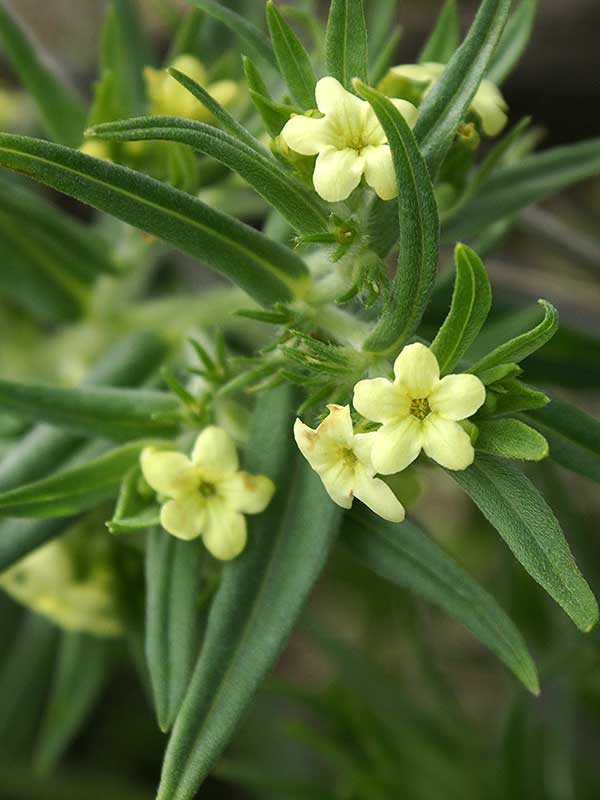Lithospermum ruderale / Columbia puccoon
- small, pale yellow flowers in early spring
- flowers in dense clusters, nestled among the leaves
- 1–3 in. long, linear leaves, notably crowded on upper part of stems
- in dry areas, especially with sagebrush
Also known as: western stoneseed, western gromwell, field puccoon
First off, the name is sort of weird. Puccoon, however, refers to any number of plants from which a dye can be extracted, typically from the roots. The name is an Algonquin word for “dye”. In this case, the dye is purple. An alternate name, stoneseed, reflects the fact that the fruit is a nutlet, or basically a small stone with germination potential. I don’t know what gromwell is supposed to mean.
This particular puccoon is found in open, fairly dry places, but can withstand moister conditions. Such places are often dominated by sagebrush. If that habitat were no so very common in the Valley, it could be a good indicator of where to find puccoon.
Puccoon blooms early in the spring, so early that in 2019 the plants were heavily damaged by the snow on June 6th. When they survive, however, the flowers are quite small and partially buried in the leaves. The result, as nicely described on the SW Colorado wildflower site, is an “overall aspect of the flowers and leaves [that] is quite delicate and appealing.”
Puccoon grows from a large root base (a caudex) and basically looks like you might expect a shrub to look. The stems are not branched in the lower parts but higher up where they do branch, they are densely covered with linear or narrowly lance-shaped, somewhat hairy leaves. The flowers are in dense clusters, technically cymes, nestled in the leaves. They are basically yellow or some greenish variant thereof with dark centers.
| Color | |
|---|---|
| Family | |
| Blossom size | |
| Inflorescence size | |
| Inflorescence type | |
| When? | |
| Where? |




